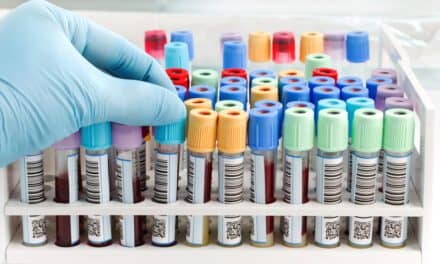
The American Society of Radiologic Technologists (ASRT) recently launched MR Basics to help bolster the education of radiologic technologists.
Becoming a radiologic technologist can prove to be a difficult task. Aside from the competitiveness of the field, the multiple modalities, technologies, and processes that are required of technologists can be a lot to handle. The American Society of Radiologic Technologists (ASRT) is working to ease that transition as well as help bolster the education of current technologists with the offering of its MR Basics educational course.Founded on the same principles as the ASRT’s successful CT Basics course, MR Basics is intended for those who are trying to decide if MR is the correct career path or current technologists who need to prepare for a lecture or test.
“This is a follow-up to our CT Basics program, which was very successful,” said Myke Kudlas, MEd, RT(R)(QM), ASRT’s chief academic officer. “Really, the way that we designed it was twofold. Number one, we know that a lot of people want to enter the CT and MR practice areas, and nowadays, the more certifications you have, the more marketable you are and the more likely you are to be working. So there’s really a push for people to get this knowledge. But how do they get a leg up on the competition so that they have this foundational knowledge down and are ready to move on to the patient scanning?”
The other consideration for the design of these courses is existing radiologic technologists who have to train incoming members to their facilities. Not only are these courses designed to improve the job prospects of incoming technologists, but they also are intended to help lighten the burden of those charged with training new hires by establishing a baseline of information.

MR Basics is designed as a 10-module, 13-credit online course, with each module offering different information about the equipment and industry.
MR Basics is designed as a 10-module, 13-credit course, with each module offering different information about the equipment and industry. The online course comes in two formats: a professional version, which is designed for radiologic technologists and worth continuing education credit, and an institutional version, which allows professors to utilize the resource in the classroom.
In order to complement the program and compensate for the lack of hands-on training that the course cannot offer, ASRT has outfitted the program with interactive animations to improve the learning experience.
“Starting in 2016, [The American Registry of Radiologic Technologists] will require a didactic component and a clinical component,” said Kudlas. “We’re giving them the didactic, but we’re also trying to provide that interactivity with animations and video to see what’s going on inside the machine and what’s happening while the scan is progressing. On a theoretical level, it’s probably a little better than hands-on because we’re able to, for example, cut away the machine and see everything that’s going on inside during the scan that you wouldn’t be able to see in the clinical area.”

Myke Kudlas, MEd, RT(R) (QM), Chief Academic Officer, ASRT
This lack of hands-on training is also augmented by what Kudlas refers to as “trade-off animations.” Because students will not have the ability to manually manipulate MR machines and see how those changes affect the scans, ASRT has included interactive animations that allow students to digitally change imaging parameters and see how a scan is changed.
“What we’ve tried to do is show how changing parameters on the machine is going to affect the finished image,” Kudlas said. “We have a lot of animations that we call ‘trade-off animations.’ You increase one factor and you can see how that affects your contrast, resolution, and noise. It allows students to practice scans without actually scanning a patient.”
The course offers a few other benefits, as well. For example, as an online offering, students are able to go at their own pace and review any topics that are difficult to understand. In addition, although CT Basics was designed as an introduction to the field, Kudlas has heard from some professors using the course that it is also a useful tool as a registry review course. He expects the same for MR Basics.
While MR Basics was released in March 2012, ASRT has plans for further modality courses in the future, including breast imaging and a cross-sectional anatomy course. If the response from these courses is the same as that from CT Basics, we can likely expect others to follow.






